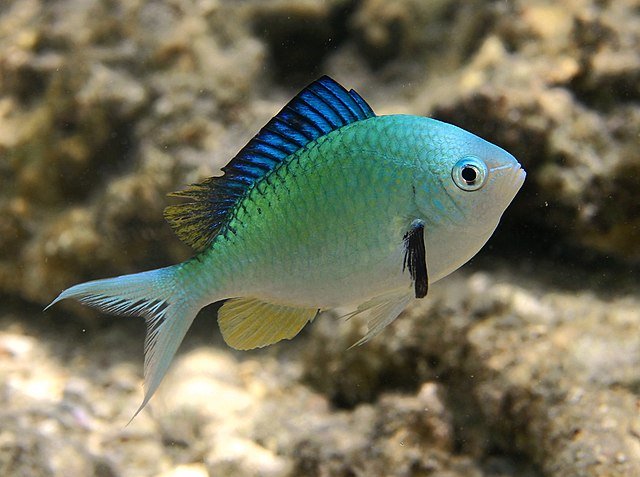
The vibrant colors and captivating behaviors of marine fish have fascinated enthusiasts for decades. But, did you know that most of these impressive creatures in our home aquariums come directly from coral reefs, some of the most biodiverse and threatened ecosystems on Earth?
The European Union (EU) is a major player in the ornamental fish industry, with millions of fish imported annually to meet the demand for home aquariums.
A recent scientific study, conducted by researchers from Fondation Franz Weber, the National Autonomous University of Mexico (UNAM), and the University of Aveiro, provides an updated review of one of its largest import markets, the European Union (EU): with an annual commercial value of 24 million euros, it details the exporting and importing countries and the diversity of species and families among the 26 million specimens imported between 2014 and 2021.
This article delves into the key findings of the research, exploring the complexities of this industry and potential solutions for a more sustainable future.
Millions in trade, millions of fish
The study reveals a rapidly expanding marine ornamental fish market in the EU, driven by an increase in both value and the large number of imported specimens. Unfortunately, this trend puts additional pressure on fragile coral reef ecosystems and the fish populations they sustain.
The vast majority of these fish are captured in the wild, often using destructive methods such as cyanide fishing. This not only harms the target species but also disrupts the delicate balance of the reef ecosystem.
According to the study, the trade in marine ornamental fish in the EU has an impressive annual value of 24 million euros. This translates to the staggering figure of 26 million specimens imported between 2014 and 2021. But the figures don’t stop there. The researchers meticulously detailed the exporting and importing countries involved, along with the diversity of species and families represented in this trade.
The research goes further, identifying the key exporting countries (think Indonesia and the Philippines) and the EU nations leading the import scene. Additionally, it explores the diversity of species and families traded, providing valuable insights into aquarium preferences.
Stay Always Informed
Join our communities to instantly receive the most important news, reports, and analysis from the aquaculture industry.
Identification of species of interest
However, obtaining comprehensive data on this global industry remains challenging. To address this gap, the study proposes a watchlist alert system. This system would consider three factors:
- Trade volume: Species with exceptionally high import figures would raise flags for closer examination.
- Import trends: Sudden spikes or declines in imports could indicate potential issues with specific species.
- Vulnerability index: By incorporating data from FishBase and the IUCN Red List, the system would consider the conservation status of a species.
A particularly interesting finding is the dramatic decline in trade of the most commonly imported fish, the green chromis (Chromis viridis). This trend could warrant stricter regulations through international agreements like CITES (Convention on International Trade in Endangered Species of Wild Fauna and Flora).
Improving tracking
The European Union uses TRACES, a robust electronic system that tracks the movement of live animals to ensure biosecurity. However, the study highlights a critical limitation: one-third of imported marine ornamental fish lack species-level identification in TRACES.
With minor adjustments, TRACES could become an even more powerful tool. By ensuring accurate species-level data, authorities could gain a clearer picture of trade and identify potential threats to vulnerable marine populations.
Marine ornamental trade: A case study for change
This study on the EU market provides valuable insights into the global trade of marine ornamental fish. By implementing a watchlist system and improving data collection within TRACES, we can ensure a more sustainable future for these captivating creatures and the coral reef ecosystems they call home.
Based on the study’s findings, it can be concluded that:
- The EU is a significant importer of marine ornamental fish, mainly captured in the wild.
- Lack of data on imported species complicates effective monitoring.
- Trade poses a threat to vulnerable coral reef ecosystems and specific fish populations.
- Watchlist systems can prioritize species needing greater attention.
- Sustainable practices, such as aquaculture, are essential for the trade’s future.
This research paves the way for a more responsible trade in marine ornamental fish, ensuring the continued health of our coral reefs.
Contact
Monica V. Biondo
Fondation Franz Weber, Bern, Switzerland
Email: monicabiondo@ffw.ch
Reference (open access)
Monica V. Biondo, Rainer P. Burki, Francisco Aguayo, Ricardo Calado. 2024. An updated review of the marine ornamental fish trade in the European Union. bioRxiv 2024.03.17.585413; doi: https://doi.org/10.1101/2024.03.17.585413
Editor at the digital magazine AquaHoy. He holds a degree in Aquaculture Biology from the National University of Santa (UNS) and a Master’s degree in Science and Innovation Management from the Polytechnic University of Valencia, with postgraduate diplomas in Business Innovation and Innovation Management. He possesses extensive experience in the aquaculture and fisheries sector, having led the Fisheries Innovation Unit of the National Program for Innovation in Fisheries and Aquaculture (PNIPA). He has served as a senior consultant in technology watch, an innovation project formulator and advisor, and a lecturer at UNS. He is a member of the Peruvian College of Biologists and was recognized by the World Aquaculture Society (WAS) in 2016 for his contribution to aquaculture.




